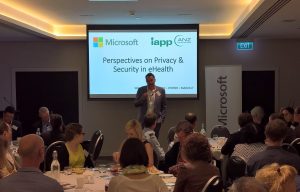Microsoft has just released a handbook for New Zealand healthcare organisations entitled “Navigating your way to the cloud in healthcare – A practical guide for the healthcare industry in New Zealand”.
 Designed as a practical roadmap, the manual was released at an eHealth workshop in Wellington. The event was attended by 70 representatives from a diverse set of organisations in the public and private sectors.
Designed as a practical roadmap, the manual was released at an eHealth workshop in Wellington. The event was attended by 70 representatives from a diverse set of organisations in the public and private sectors.
Microsoft NZ’s Director of Corporate, External and Legal Affairs, Michael Brick says the handbook aims to help New Zealand’s healthcare institutions take full advantage of the transformational benefits of cloud technologies based on a better understanding of the regulatory framework.
Mr Brick says the handbook book was modelled after similar literature Microsoft has produced for the financial services industry, and advocates that healthcare institutions in New Zealand can safely move to the cloud by adopting a “four pillar” approach:
- Understanding the regulatory landscape – through a high-level overview of the landscape and process for regulator engagement;
- Full, informed stakeholder involvement – by understanding the technical solutions available, putting together a cross-disciplinary team, and obtaining product/service information from cloud services providers.
- Partnering with the right cloud services provider – by ensuring that the cloud services provider meets the necessary regulatory requirements.
- A robust contract –what to look out for in cloud services provider contracts.
Mr Brick says the handbook also contains real-life case study examples of how cloud technologies are already transforming the way healthcare services are provided in New Zealand, and also provides useful applied scenarios illustrating how customers can safely navigate regulatory issues in adopting Office 365 and Azure.
“We hope this handbook becomes a vitally useful resource for the New Zealand healthcare industry, and we look forward to continuing the conversation as we seek to realise our mission to help these institutions in their journey towards a digital future,” says Brick.
Click here to view the handbook as an online PDF.
